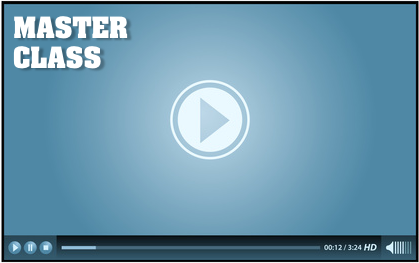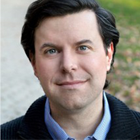How to use the power of habit to lead the life you want
This guide is based on Mixergy’s interview with Charles Duhigg.
Charles Duhigg was frustrated about gaining weight from his afternoon cookie-eating habit, so he re-programmed his behavior and lost 12 pounds. It was all done by controlling habits, so we invited him to teach you how to do it.
Charles is a reporter for The New York Times and is the author of The Power of Habit, which discusses the science of habit formation and teaches people how to use it to change their habits.
Here are the actionable highlights from the course.
1. Identify current habits to see if they’re worth keeping or not
When Charles started gaining weight, he identified his afternoon cookie snack as the culprit and decided the cookie-eating wasn’t a habit worth keeping.
- Take Action:
- Pick out habits by identifying the cue, the routine, and the reward you get from each one, and decide to keep or change them based on their impact on your life.
2. Establish cues and use them to start forming good habits
To instill exercise habits, Charles says some people use cues like putting their running clothes beside their bed or putting on their running shoes before breakfast.
- Take Action:
- Create a habit by setting up cues based on a time of day, a particular place, a certain emotion, the presence of certain people, or some other kind of trigger.
3. Set up rewards to reinforce positive habits
Charles says that runners reward themselves at the start of a run by listening to a podcast and at the end of the run when they get a runner’s high.
- Take Action:
- Reward yourself before, during, or after a habitual routine by doing something you enjoy or by getting something you want.
4. Change your routine to get rid of unwanted habits
Charles says that Alcoholics Anonymous helps alcoholics by substituting their drinking routine with AA meetings, which are cued by stressful events and provide a reward in the form of tension relief.
- Take Action:
- Identify the cues and rewards associated with your habits, and replace the negative routines with positive ones while keeping the same cues and rewards.
5. Join a group for support and positive reinforcement
Charles says that alcoholics who feel like giving up get support and positive reinforcement from other AA members, which encourages them to try harder to control their alcoholism.
- Take Action:
- Join a support group or form one comprised of your friends and family, and look to them for support and reassurance.
6. Identify keystone habits to control other habitual patterns
Charles explains how exercise as a keystone habit makes changing other habits easier, like eating better and procrastinating less.
- Take Action:
- Identify which of your habits influences your life or organization the most, and work on developing that keystone habit.
7. Create an action plan to resolve anticipated problems faster
Charles says that rehab patients who write action plans on how to deal with moments of intense pain recovered twice as fast as the patients who didn’t.
- Take Action:
- List problems or difficulties that you expect to encounter, and create an action plan by coming up with routines to address each one.
Want to make sure you get results?
Watch the full interview now
Written by Hazel Chua, based on production notes by Jeremy Weisz

